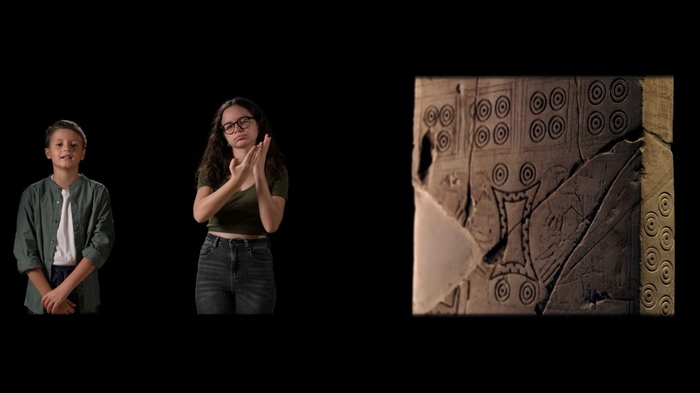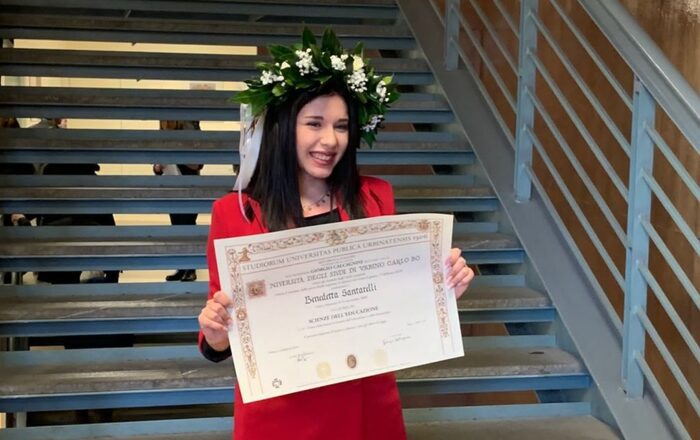Showing the “beautiful” buildings of the Opéra-Comédie de Montpellier in sign language is enough for a while.
"What really moves is the music and what you feel deep within you, in your guts,"
exclaims Valérie Chevalier, director of the Opéra de Montpellier.
For the first time, the venue is making its shows inclusive thanks to a new technology: vibrating vests, also nicknamed “SubPacs”.
Already known to the world of video games, the device captures the sound universe of concerts, to transmit music to deaf people using vibrations.
To read also At the Opéra de Montpellier, Paco Ibáñez celebrates Edgar Morin's 100th birthday
Initiatives have already been taken for the blind, in particular with the audio description offered in theaters. In July, seven SubPacs mingled with the crowd at the Savalaure classical music festival in Arnac, Cantal. At opera, the experience begs to expand. Valérie Chevalier, the first woman to conduct a national opera, is presented as
"very human"
by her colleagues. Turned towards audiences on the fringes of classical music such as people from disadvantaged neighborhoods or the deaf and hard of hearing, she questioned their access to this art. The first initiative dates back to February 2019, when two chansigneurs (artistic interpreter of sign language) were on stage to translate the action of
Don Pasquale
, by Donizetti.
The deaf and hard of hearing could then understand the exchanges between the singers.
“The first rows were reserved for them,”
emphasizes the director.
But quickly, the chansigneurs let Valérie Chevalier and her team know that they
"get bored"
during downtime,
"nothing is happening
" for them.
Like their deaf audience, they cannot perceive music.
Sound converter
It is thanks to the chansigneurs that Valérie Chevalier discovered the existence of vibrating vests. The Opéra de Montpellier then had some lent out by the Théâtre de Nîmes. The American-Canadian company Timmpi is at the origin of this technology. The vests work by bluetooth. Small microphones are placed on the stage or in the pit, where the sound of the instruments is picked up, transferred to a mixer and then reproduced in vibrations in contact with the listener.
The Montpellier Opera has invested in twenty vibrating vests, purchased for around 700 euros each.
“It comes at a cost, but the returns are so incredible it's well worth the investment.”
Valérie Chevalier is currently considering new acquisitions.
"We have a fairly loyal deaf audience, they feel welcome and know that they have their place with us, among the hearing"
.
A long-term investment which can, in turn, be the subject of a loan for another performance hall.
The vests can be worn like a bag, on the back or on the front, depending on the configuration of the concert and the size of the person wearing it.
Opera National Orchestra of Montpellier Occitanie
“It's so true to what we hear,”
says Valérie Chevalier, with pride in her voice.
It is a real converter of sound, the slightest note vibrates in you ”
. She specifies that as a hearing person, the experience is not pleasant, even
“unbearable”
: the vibrations are superimposed on the sounds.
“The last time we did an operation like this indoors, a 65-year-old deaf gentleman was crying. He said to me: “This is the first time that I go to the opera, it is the first time that I hear music
”
. When we see the result, we should be able to extend it to everyone and even to children. ”
Thing said, done, initiations follow one another with middle and high school students in recent months.
Here again, the SubPacs are very successful.
The performance
of La Fontaine's Fables
on October 16 and 17 made vibrating vests accessible to young children for the first time.
Opera National Orchestra of Montpellier Occitanie
The vests are suitable for
"toddlers".
Children aged 5 to 6 on average attended a performance
of La Fontaine's
Fables
on October 16 and 17. This is the first time that the vests were offered to such a young audience.
“It's overwhelming to see children hearing music and telling you: we hear! It's quite magical ”
. Space-saving, the vest is worn like a backpack if the concert is standing. In a seated configuration, it is placed at the front.
However, not all shows are compatible with this device. For the upcoming program, the Opéra de Montpellier has selected seven where the use is possible, the aim being to promote as much as possible access for the deaf and hard of hearing to emblematic titles.
Stravinsky's
Rite of Spring
,
Rossini's
Cinderella and
Puccini's
Tosca
guarantee thrills, from the visual to the vibrations. Surtitles will be proposed and simplified, as Valérie Chevalier explains:
"French is not the mother tongue of the deaf, they do not necessarily always read it very well and very quickly"
. From now on in Montpellier, the deaf and hearing public are united and vibrate to theunison.









